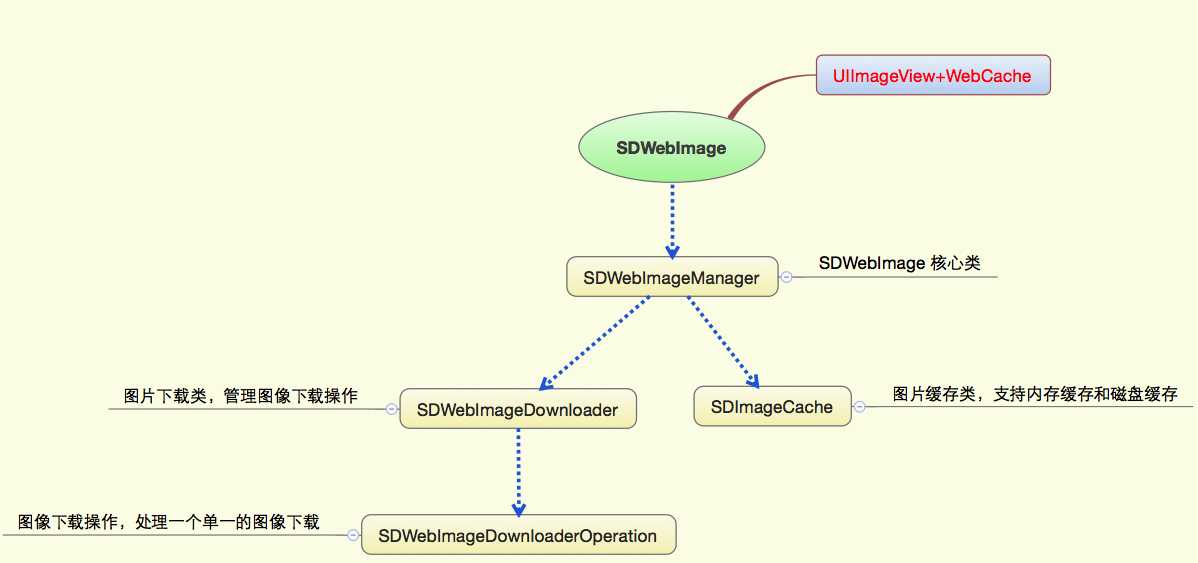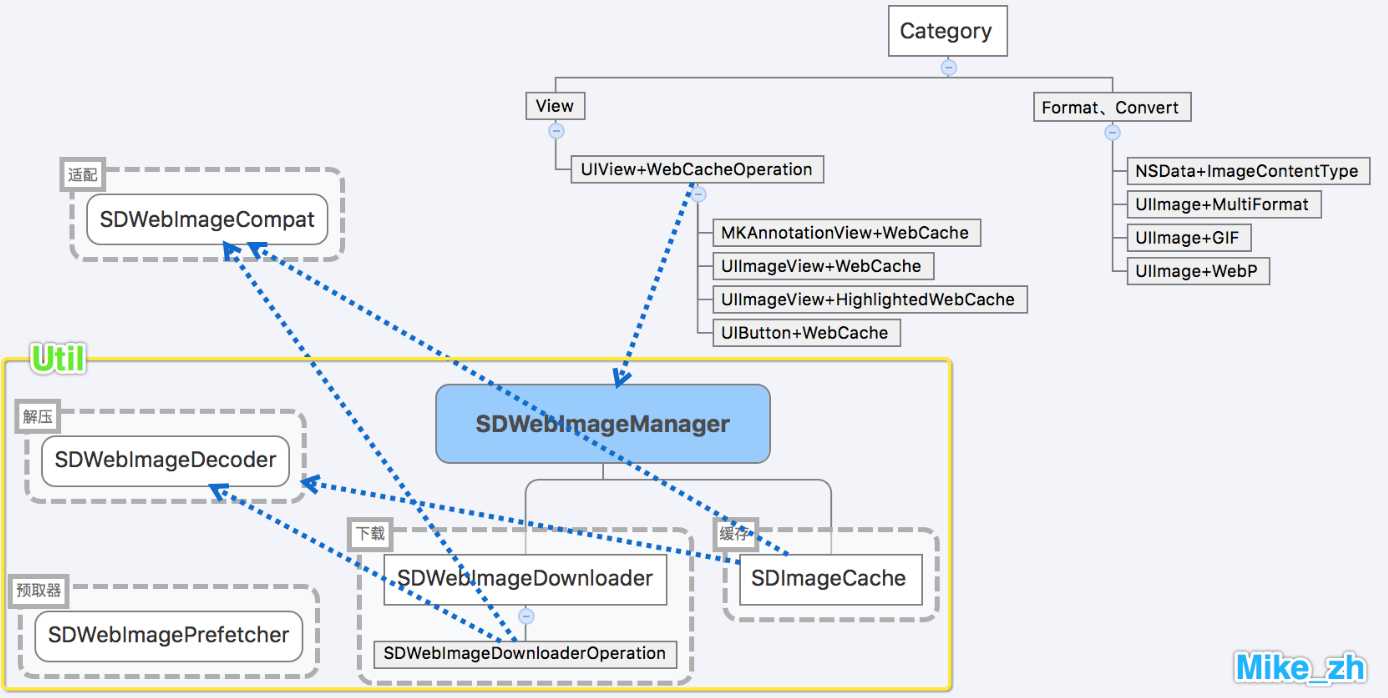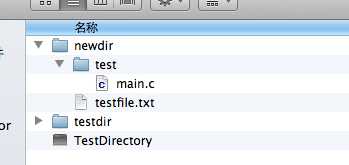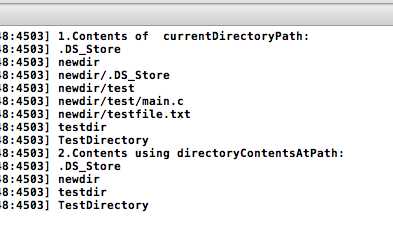标签:
这个类库提供一个UIImageView类别以支持加载来自网络的远程图片。具有缓存管理、异步下载、同一个URL下载次数控制和优化等特征。
地址:https://github.com/rs/SDWebImage
原理图:

各个类的交互图:

一 插件的运用
针对这部分的理论知识可以查看文章《SDWebImage 图片下载缓存框架 常用方法及原理》,已经针对SDWebImage的相关知识点都有相应介绍;并且把相关的类都有注解,接下来将会简单介绍一些属性及小知识点:
1.1 设置存储路径
可以在项目AppDelegate设置存储路径,SDWebImage默认使用磁盘缓存,在 沙盒/Library/Cache中可以找到带WebImageCache字眼的目录,可以找到缓存的图片,下面这个可以设置一个只读的存储路径:
NSString *bundledPath = [[[NSBundle mainBundle] resourcePath] stringByAppendingPathComponent:@"CustomPathImages"]; [[SDImageCache sharedImageCache] addReadOnlyCachePath:bundledPath];
1.2 SDWebImage的最大并发数是多少
在类SDWebImageDownloader中,默认并发数为6(_downloadQueue.maxConcurrentOperationCount = 6);也可以修改maxConcurrentDownloads设置其下载并发数;
1.3 SDWebImage缓存周期
SDWebImage缓存周期为一周,可以在类SDImageCache里面有kDefaultCacheMaxCacheAge常量,定义的缓存时间;static const NSInteger kDefaultCacheMaxCacheAge = 60 * 60 * 24 * 7; // 1 week
1.4 SDWebImage 缓存图片命名规则
为了防止名称重复,对其进行 md5 运算;
1.5 默认下载的超时时长是多少?
默认为15秒,可以在类SDWebImageDownloader中设置downloadTimeout
1.6 SDWebImage用什么类型缓存图片?
NSCache,SDImageCache内处理内存警告,以通知的方式,clearMemory
1.7 cleanDisk的执行过程
i. 先遍历所有的缓存文件,记录过期的文件,计算缓存文件的总大小 ii. 删除过期的文件 iii. 判断maxCacheSize的值是否>0,如果大于0再判断缓存的文件总大小是否大于maxCacheSize iv.如果缓存文件的总大小超过maxCacheSize,删除最早的文件 注意:.jpg、.gif等文件需要把扩展名填上,png不需要
1.8 SDWebImage获得缓存大小,并对它进行清除
float tmpSize = [[SDImageCache sharedImageCache] getSize]; NSString *clearCacheName =@"当前缓存已清理"; if (tmpSize>0) { clearCacheName=tmpSize >= 1 ? [NSString stringWithFormat:@"成功清理缓存(%.2fM)",tmpSize] : [NSString stringWithFormat:@"成功清理缓存(%.2fK)",tmpSize * 1024]; } [[SDImageCache sharedImageCache] clearDisk];
1.9 SDWebImages是如何识别图片
NSData+ImageContentType.m中,根据图片文件十六进制数据的第一个字节判断
+ (NSString *)sd_contentTypeForImageData:(NSData *)data { uint8_t c; [data getBytes:&c length:1]; switch (c) { case 0xFF: return @"image/jpeg"; case 0x89: return @"image/png"; case 0x47: return @"image/gif"; case 0x49: case 0x4D: return @"image/tiff"; case 0x52: // R as RIFF for WEBP if ([data length] < 12) { return nil; } NSString *testString = [[NSString alloc] initWithData:[data subdataWithRange:NSMakeRange(0, 12)] encoding:NSASCIIStringEncoding]; if ([testString hasPrefix:@"RIFF"] && [testString hasSuffix:@"WEBP"]) { return @"image/webp"; } return nil; } return nil; }
1.10 SDImageCacheType 缓存类型
SDImageCacheTypeNone 永不缓存,但是从网上下载
SDImageCacheTypeDisk 只缓存到磁盘上
SDImageCacheTypeMemory 只缓存到内存中
1.11 SDWebImageDownloaderProgressBlock 下载进度
typedef void(^SDWebImageDownloaderProgressBlock)(NSInteger receivedSize, NSInteger expectedSize); progress 参数: receivedSize 接收到的字节数 expectedSize 期望下载的字节数 //乘1.0是为了转换成float类型 float progress = receivedSize * 1.0 / expectedSize;
NSURL *url = [NSURL URLWithString:@"http://picview01.baomihua.com/photos/20120624/m_14_634761470842343750_15728444.jpg"]; [self.imageView sd_setImageWithURL:url placeholderImage:nil options:0 progress:^(NSInteger receivedSize, NSInteger expectedSize) { //乘1.0是为了转换成float类型 float progress = receivedSize * 1.0 / expectedSize; NSLog(@"下载进度 %f",progress); } completed:^(UIImage *image, NSError *error, SDImageCacheType cacheType, NSURL *imageURL) { NSLog(@"完成"); }];
1.12 SDWebImageOptions 属性
typedef NS_OPTIONS(NSUInteger, SDWebImageOptions) {
// 默认情况下,当URL下载失败时,URL会被列入黑名单,导致库不会再去重试,该标记用于禁用黑名单
SDWebImageRetryFailed = 1 << 0,
// 默认情况下,图片下载开始于UI交互,该标记禁用这一特性,这样下载延迟到UIScrollView减速时
SDWebImageLowPriority = 1 << 1,
// 该标记禁用磁盘缓存
SDWebImageCacheMemoryOnly = 1 << 2,
// 该标记启用渐进式下载,图片在下载过程中是渐渐显示的,如同浏览器一下。
// 默认情况下,图像在下载完成后一次性显示
SDWebImageProgressiveDownload = 1 << 3,
// 即使图片缓存了,也期望HTTP响应cache control,并在需要的情况下从远程刷新图片。
// 磁盘缓存将被NSURLCache处理而不是SDWebImage,因为SDWebImage会导致轻微的性能下载。
// 该标记帮助处理在相同请求URL后面改变的图片。如果缓存图片被刷新,则完成block会使用缓存图片调用一次
// 然后再用最终图片调用一次
SDWebImageRefreshCached = 1 << 4,
// 在iOS 4+系统中,当程序进入后台后继续下载图片。这将要求系统给予额外的时间让请求完成
// 如果后台任务超时,则操作被取消
SDWebImageContinueInBackground = 1 << 5,
// 通过设置NSMutableURLRequest.HTTPShouldHandleCookies = YES;来处理存储在NSHTTPCookieStore中的cookie
SDWebImageHandleCookies = 1 << 6,
// 允许不受信任的SSL认证
SDWebImageAllowInvalidSSLCertificates = 1 << 7,
// 默认情况下,图片下载按入队的顺序来执行。该标记将其移到队列的前面,
// 以便图片能立即下载而不是等到当前队列被加载
SDWebImageHighPriority = 1 << 8,
// 默认情况下,占位图片在加载图片的同时被加载。该标记延迟占位图片的加载直到图片已以被加载完成
SDWebImageDelayPlaceholder = 1 << 9,
// 通常我们不调用动画图片的transformDownloadedImage代理方法,因为大多数转换代码可以管理它。
// 使用这个票房则不任何情况下都进行转换。
SDWebImageTransformAnimatedImage = 1 << 10,
};
运用如下:
运用上面的两个 SDWebImageRetryFailed : 下载失败后,会自动重新下载 SDWebImageLowPriority : 当正在进行UI交互时,自动暂停内部的一些下载操作 SDWebImageRetryFailed | SDWebImageLowPriority : 拥有上面2个功能 - (UITableViewCell *)tableView:(UITableView *)tableView cellForRowAtIndexPath:(NSIndexPath *)indexPath { static NSString *ID = @"app"; UITableViewCell *cell = [tableView dequeueReusableCellWithIdentifier:ID]; if (!cell) { cell = [[UITableViewCell alloc] initWithStyle:UITableViewCellStyleSubtitle reuseIdentifier:ID]; } // 取出模型 HMApp *app = self.apps[indexPath.row]; // 设置基本信息 cell.textLabel.text = app.name; cell.detailTextLabel.text = app.download; // 下载图片 NSURL *url = [NSURL URLWithString:app.icon]; UIImage *placeholder = [UIImage imageNamed:@"placeholder"]; SDWebImageOptions options = SDWebImageRetryFailed | SDWebImageLowPriority; [cell.imageView sd_setImageWithURL:url placeholderImage:placeholder options:options progress:^(NSInteger receivedSize, NSInteger expectedSize) { // 这个block可能会被调用多次 NSLog(@"下载进度:%f", (double)receivedSize / expectedSize); } completed:^(UIImage *image, NSError *error, SDImageCacheType cacheType, NSURL *imageURL) { NSLog(@"----图片加载完毕---%@", image); }]; return cell; }
1.1.3 下载顺序SDWebImageDownloaderExecutionOrder
typedef NS_ENUM(NSInteger, SDWebImageDownloaderExecutionOrder) { // 以队列的方式,按照先进先出的顺序下载。这是默认的下载顺序 SDWebImageDownloaderFIFOExecutionOrder, // 以栈的方式,按照后进先出的顺序下载。 SDWebImageDownloaderLIFOExecutionOrder };
1.1.4 SDWebImageDecoder类异步对图像进行了一次解压
由于UIImage的imageWithData函数是每次画图的时候才将Data解压成ARGB的图像,所以在每次画图的时候,会有一个解压操作,这样效率很低,但是只有瞬时的内存需求。为了提高效率通过SDWebImageDecoder将包装在Data下的资源解压,然后画在另外一张图片上,这样这张新图片就不再需要重复解压了。这种做法是典型的空间换时间的做法。
1.1.5 SDImageCache是怎么做数据管理的
SDImageCache分两个部分,一个是内存层面的,一个是硬盘层面的。内存层面的相当是个缓存器,以Key-Value的形式存储图片。当内存不够的时候会清除所有缓存图片。用搜索文件系统的方式做管理,文件替换方式是以时间为单位,剔除时间大于一周的图片文件。当SDWebImageManager向SDImageCache要资源时,先搜索内存层面的数据,如果有直接返回,没有的话去访问磁盘,将图片从磁盘读取出来,然后调SDWebImageDecoder做Decoder,将图片对象放到内存层面做备份,再返回调用层。
1.1.6 SDWebImage内部实现过程
1. 入口 setImageWithURL:placeholderImage:options: 会先把 placeholderImage 显示,然后 SDWebImageManager 根据 URL 开始处理图片。? 2. 进入 SDWebImageManager-downloadWithURL:delegate:options:userInfo:,交给 SDImageCache 从缓存查找图片是否已经下载 queryDiskCacheForKey:delegate:userInfo:.? 3. 先从内存图片缓存查找是否有图片,如果内存中已经有图片缓存,SDImageCacheDelegate 回调 imageCache:didFindImage:forKey:userInfo: 到 SDWebImageManager。? 4. SDWebImageManagerDelegate 回调 webImageManager:didFinishWithImage: 到 UIImageView+WebCache 等前端展示图片。? 5. 如果内存缓存中没有,生成 NSInvocationOperation 添加到队列开始从硬盘查找图片是否已经缓存。? 6. 根据 URLKey 在硬盘缓存目录下尝试读取图片文件。这一步是在 NSOperation 进行的操作,所以回主线程进行结果回调 notifyDelegate:。? 7. 如果上一操作从硬盘读取到了图片,将图片添加到内存缓存中(如果空闲内存过小,会先清空内存缓存)。SDImageCacheDelegate 回调 imageCache:didFindImage:forKey:userInfo:。进而回调展示图片。? 8. 如果从硬盘缓存目录读取不到图片,说明所有缓存都不存在该图片,需要下载图片,回调 imageCache:didNotFindImageForKey:userInfo:。? 9. 共享或重新生成一个下载器 SDWebImageDownloader 开始下载图片。? 10. 图片下载由 NSURLConnection 来做,实现相关 delegate 来判断图片下载中、下载完成和下载失败。? 11. connection:didReceiveData: 中利用 ImageIO 做了按图片下载进度加载效果。? 12. connectionDidFinishLoading: 数据下载完成后交给 SDWebImageDecoder 做图片解码处理。? 13. 图片解码处理在一个 NSOperationQueue 完成,不会拖慢主线程 UI。如果有需要对下载的图片进行二次处理,最好也在这里完成,效率会好很多。? 14. 在主线程 notifyDelegateOnMainThreadWithInfo: 宣告解码完成,imageDecoder:didFinishDecodingImage:userInfo: 回调给 SDWebImageDownloader。? 15. imageDownloader:didFinishWithImage: 回调给 SDWebImageManager 告知图片下载完成。? 16. 通知所有的 downloadDelegates 下载完成,回调给需要的地方展示图片。? 17. 将图片保存到 SDImageCache 中,内存缓存和硬盘缓存同时保存。写文件到硬盘也在以单独 NSInvocationOperation 完成,避免拖慢主线程。? 18. SDImageCache 在初始化的时候会注册一些消息通知,在内存警告或退到后台的时候清理内存图片缓存,应用结束的时候清理过期图片。? 19. SDWI 也提供了 UIButton+WebCache 和 MKAnnotationView+WebCache,方便使用。? 20. SDWebImagePrefetcher 可以预先下载图片,方便后续使用。
二 知识点
2.1 typedef定义Block
这样定义方法时直接用typedef的类型,只要有引入此头文件,都可以使用到,在block里面进行主线程操作,这样就可以省得在调用时每个地方都写;
SDImageCache.h文件: typedef void(^SDWebImageQueryCompletedBlock)(UIImage *image, SDImageCacheType cacheType); @interface SDImageCache : NSObject - (NSOperation *)queryDiskCacheForKey:(NSString *)key done:(SDWebImageQueryCompletedBlock)doneBlock; @end SDImageCache.m文件 - (NSOperation *)queryDiskCacheForKey:(NSString *)key done:(SDWebImageQueryCompletedBlock)doneBlock { if (!doneBlock) { return nil; } if (!key) { doneBlock(nil, SDImageCacheTypeNone); return nil; } // First check the in-memory cache... UIImage *image = [self imageFromMemoryCacheForKey:key]; if (image) { doneBlock(image, SDImageCacheTypeMemory); return nil; } NSOperation *operation = [NSOperation new]; dispatch_async(self.ioQueue, ^{ if (operation.isCancelled) { return; } @autoreleasepool { UIImage *diskImage = [self diskImageForKey:key]; if (diskImage && self.shouldCacheImagesInMemory) { NSUInteger cost = SDCacheCostForImage(diskImage); [self.memCache setObject:diskImage forKey:key cost:cost]; } dispatch_async(dispatch_get_main_queue(), ^{ doneBlock(diskImage, SDImageCacheTypeDisk); }); } }); return operation; }
2.2 SDWebImage 有两个宏 来判断程序在主线程运行(sync同步 async异步)
#define dispatch_main_sync_safe(block) if ([NSThread isMainThread]) { block(); } else { dispatch_sync(dispatch_get_main_queue(), block); } #define dispatch_main_async_safe(block) if ([NSThread isMainThread]) { block(); } else { dispatch_async(dispatch_get_main_queue(), block); }
运用如下:
if ([self showActivityIndicatorView]) { [self addActivityIndicator]; } __weak __typeof(self)wself = self; id <SDWebImageOperation> operation = [SDWebImageManager.sharedManager downloadImageWithURL:url options:options progress:progressBlock completed:^(UIImage *image, NSError *error, SDImageCacheType cacheType, BOOL finished, NSURL *imageURL) { [wself removeActivityIndicator]; if (!wself) return; dispatch_main_sync_safe(^{ if (!wself) return; if (image && (options & SDWebImageAvoidAutoSetImage) && completedBlock) { completedBlock(image, error, cacheType, url); return; } else if (image) { wself.image = image; [wself setNeedsLayout]; } else { if ((options & SDWebImageDelayPlaceholder)) { wself.image = placeholder; [wself setNeedsLayout]; } } if (completedBlock && finished) { completedBlock(image, error, cacheType, url); } }); }]; [self sd_setImageLoadOperation:operation forKey:@"UIImageViewImageLoad"];
2.3 三元?:符号的运用
[self sd_setImageWithURL:url placeholderImage:lastPreviousCachedImage ?: placeholder options:options progress:progressBlock completed:completedBlock];
若?后面的值 lastPreviousCachedImage则可以这么简单写
2.4 SDWebImage 部分清除缓存的原理
部分清理则是根据我们设定的一些参数值来移除一些文件,这里主要有两个指标:文件的缓存有效期及最大缓存空间大小。文件的缓存有效期可以通过maxCacheAge属性来设置,默认是1周的时间。如果文件的缓存时间超过这个时间值,则将其移除。而最大缓存空间大小是通过maxCacheSize属性来设置的,如果所有缓存文件的总大小超过这一大小,则会按照文件最后修改时间的逆序,以每次一半的递归来移除那些过早的文件,直到缓存的实际大小小于我们设置的最大使用空间。清理的操作在-cleanDiskWithCompletionBlock:方法中,其实现如下:
- (void)cleanDiskWithCompletionBlock:(SDWebImageNoParamsBlock)completionBlock { dispatch_async(self.ioQueue, ^{ NSURL *diskCacheURL = [NSURL fileURLWithPath:self.diskCachePath isDirectory:YES]; NSArray *resourceKeys = @[NSURLIsDirectoryKey, NSURLContentModificationDateKey, NSURLTotalFileAllocatedSizeKey]; // 1. 该枚举器预先获取缓存文件的有用的属性 NSDirectoryEnumerator *fileEnumerator = [_fileManager enumeratorAtURL:diskCacheURL includingPropertiesForKeys:resourceKeys options:NSDirectoryEnumerationSkipsHiddenFiles errorHandler:NULL]; NSDate *expirationDate = [NSDate dateWithTimeIntervalSinceNow:-self.maxCacheAge]; NSMutableDictionary *cacheFiles = [NSMutableDictionary dictionary]; NSUInteger currentCacheSize = 0; // 2. 枚举缓存文件夹中所有文件,该迭代有两个目的:移除比过期日期更老的文件;存储文件属性以备后面执行基于缓存大小的清理操作 NSMutableArray *urlsToDelete = [[NSMutableArray alloc] init]; for (NSURL *fileURL in fileEnumerator) { NSDictionary *resourceValues = [fileURL resourceValuesForKeys:resourceKeys error:NULL]; // 3. 跳过文件夹 if ([resourceValues[NSURLIsDirectoryKey] boolValue]) { continue; } // 4. 移除早于有效期的老文件 NSDate *modificationDate = resourceValues[NSURLContentModificationDateKey]; if ([[modificationDate laterDate:expirationDate] isEqualToDate:expirationDate]) { [urlsToDelete addObject:fileURL]; continue; } // 5. 存储文件的引用并计算所有文件的总大小,以备后用 NSNumber *totalAllocatedSize = resourceValues[NSURLTotalFileAllocatedSizeKey]; currentCacheSize += [totalAllocatedSize unsignedIntegerValue]; [cacheFiles setObject:resourceValues forKey:fileURL]; } for (NSURL *fileURL in urlsToDelete) { [_fileManager removeItemAtURL:fileURL error:nil]; } // 6.如果磁盘缓存的大小大于我们配置的最大大小,则执行基于文件大小的清理,我们首先删除最老的文件 if (self.maxCacheSize > 0 && currentCacheSize > self.maxCacheSize) { // 7. 以设置的最大缓存大小的一半作为清理目标 const NSUInteger desiredCacheSize = self.maxCacheSize / 2; // 8. 按照最后修改时间来排序剩下的缓存文件 NSArray *sortedFiles = [cacheFiles keysSortedByValueWithOptions:NSSortConcurrent usingComparator:^NSComparisonResult(id obj1, id obj2) { return [obj1[NSURLContentModificationDateKey] compare:obj2[NSURLContentModificationDateKey]]; }]; // 9. 删除文件,直到缓存总大小降到我们期望的大小 for (NSURL *fileURL in sortedFiles) { if ([_fileManager removeItemAtURL:fileURL error:nil]) { NSDictionary *resourceValues = cacheFiles[fileURL]; NSNumber *totalAllocatedSize = resourceValues[NSURLTotalFileAllocatedSizeKey]; currentCacheSize -= [totalAllocatedSize unsignedIntegerValue]; if (currentCacheSize < desiredCacheSize) { break; } } } } if (completionBlock) { dispatch_async(dispatch_get_main_queue(), ^{ completionBlock(); }); } }); }
2.5 查看IOS沙盒中文件的属性(修改日期,创建日期,大小等)
NSString *strPath =[[NSBundle mainBundle] pathForResource:@"lomo.jpg" ofType:nil]; NSLog(@"path:%@", strPath); NSFileManager *fileManager = [NSFileManager defaultManager]; NSString *path = strPath;//@"/tmp/List"; NSError *error = nil; NSDictionary *fileAttributes = [fileManager attributesOfItemAtPath:path error:&error]; if (fileAttributes != nil) { NSNumber *fileSize = [fileAttributes objectForKey:NSFileSize]; NSString *fileOwner = [fileAttributes objectForKey:NSFileOwnerAccountName]; NSDate *fileModDate = [fileAttributes objectForKey:NSFileModificationDate]; NSDate *fileCreateDate = [fileAttributes objectForKey:NSFileCreationDate]; if (fileSize) { NSLog(@"File size: %qi\n", [fileSize unsignedLongLongValue]); } if (fileOwner) { NSLog(@"Owner: %@\n", fileOwner); } if (fileModDate) { NSLog(@"Modification date: %@\n", fileModDate); } if (fileCreateDate) { NSLog(@"create date:%@\n", fileModDate); } } else { NSLog(@"Path (%@) is invalid.", path); }
2.6 遍历文件NSDirectoryEnumerator
需要获得目录的内容列表,使用enumeratorAtPath:方法或者directoryC ontentsAtPath:方法,可以完成枚举过程。如果使用第一种enumeratorAtPath:方法,一次可以枚举指定目录中的每个文件。默认情况下,如果其中一个文件为目录,那么也会递归枚举它的内容。在这个过程中,通过向枚举对象发送一条skipDescendants消息,可以动态地阻止递归过程,从而不再枚举目录中的内容。对于directoryContentsAtPath:方法,使用这个方法,可以枚举指定目录的内容,并在一个数组中返回文件列表。如果这个目录中的任何文件本身是个目录,这个方法并不递归枚举它的内容。
NSString *path; NSFileManager *fm; NSDirectoryEnumerator *dirEnum; NSArray *dirArray; fm = [NSFileManager defaultManager]; //获取当前的工作目录的路径 path = [fm currentDirectoryPath]; //遍历这个目录的第一种方法:(深度遍历,会递归枚举它的内容) dirEnum = [fm enumeratorAtPath:path]; NSLog(@"1.Contents of %@:",path); while ((path = [dirEnum nextObject]) != nil) { NSLog(@"%@",path); } //遍历目录的另一种方法:(不递归枚举文件夹种的内容) dirArray = [fm directoryContentsAtPath:[fm currentDirectoryPath]]; NSLog(@"2.Contents using directoryContentsAtPath:"); for(path in dirArray) NSLog(@"%@",path);
通过以上程序变例如下文件路径:


如果对上述代码while循环做如下修改,可以阻止任何子目录中的枚举
while ((path = [dirEnum nextObject]) != nil) { NSLog(@"%@",path); BOOL flag; [fm fileExistsAtPath:path isDirectory:&flag]; if(flag == YES) [dirEnum skipDescendants]; }
这里flag是一个BOOL类型的变量。如果指定的路径是目录,则fileExistsAtPath:在flag中存储YES,否则存储NO。
2.7 SDImageCache 后台运行通知注册
先说说iOS 应用程序5个状态;
停止运行-应用程序已经终止,或者还未启动。
不活动-应用程序处于前台但不再接收事件(例如,用户在app处于活动时锁住了设备)。
活动-app处于“使用中”的状态。
后台-app不再屏幕上显示,但它仍然执行代码。
挂起-app仍然驻留内存但不再执行代码。
按下Home键时,app从活动状态转入后台,绝大部分app通常在几秒内就从后台变成了挂起。从 iOS 4 开始,应用就可以在退到后台后,继续运行一小段时间(10 分钟);iOS 7 需要注意的区别:iOS 7 以前,应用进入后台继续运行时,如果用户锁屏了,那么 iOS 会等待应用运行完,才进入睡眠状态。而在 iOS 7 上,系统会很快进入睡眠状态,那些后台应用也就暂停了。如果收到事件被唤醒(例如定时事件、推送、位置更新等),后台应用才能继续运行一会。因为处理过程变成了断断续续的。更多关于后台运行的知识可以查看这文章或这文章;
a:如果是在程序的AppDelegate里面,就可以直接在这个方法里面处理;
// 当应用程序掉到后台时,执行该方法 - (void)applicationDidEnterBackground:(UIApplication *)application { }
b:如果是自个的类或控制器要处理,比如进入后台当前页或类的一些信息要进行保存;那么就要注册系统的通知;下面SDImageCache 里面的实现代码进行讲解;
- (id)initWithNamespace:(NSString *)ns diskCacheDirectory:(NSString *)directory { if ((self = [super init])) { [[NSNotificationCenter defaultCenter] addObserver:self selector:@selector(backgroundCleanDisk) name:UIApplicationDidEnterBackgroundNotification object:nil]; } return self; } - (void)backgroundCleanDisk { Class UIApplicationClass = NSClassFromString(@"UIApplication"); if(!UIApplicationClass || ![UIApplicationClass respondsToSelector:@selector(sharedApplication)]) { return; } UIApplication *application = [UIApplication performSelector:@selector(sharedApplication)]; __block UIBackgroundTaskIdentifier bgTask = [application beginBackgroundTaskWithExpirationHandler:^{ //完成后,要告诉iOS,任务完成,提交完成申请“好借好还” //标记指定的后台任务完成 [application endBackgroundTask:bgTask]; //销毁后台任务标识符 bgTask = UIBackgroundTaskInvalid; }]; // 调用本地的方法,在完成后再进行进入挂起,完成后,要告诉iOS,任务完成,提交完成申请“好借好还” [self cleanDiskWithCompletionBlock:^{ [application endBackgroundTask:bgTask]; bgTask = UIBackgroundTaskInvalid; }]; } //记得删除通知 - (void)dealloc { [[NSNotificationCenter defaultCenter] removeObserver:self]; }
注意:UIApplication这边是通过运行时获取;UIBackgroundTaskIdentifier知识点可以看介绍;当一个 iOS 应用被送到后台,它的主线程会被暂停。你用 NSThread 的 detachNewThreadSelector:toTar get:withObject:类方法创建的线程也被挂起了。如果你想在后台完成一个长期任务,就必须调用 UIApplication 的beginBackgroundTaskWithExpirationHandler:实例方法,来向 iOS 借点时间。默认情况下,如果在这个期限内,长期任务没有被完成,iOS 将终止程序。怎么办?可以使用 beginBackgroundTaskWithExpirationHandler:实例方法,来向 iOS 再借点时间。借和换必须成双成对!程序提前完成了,也可以提前结束(当然上面还是要用application):
[[UIApplication sharedApplication] endBackgroundTask:self.backgroundTaskIdentifier];
self.backgroundTaskIdentifier = UIBackgroundTaskInvalid;
标签:
原文地址:http://www.cnblogs.com/wujy/p/5578893.html